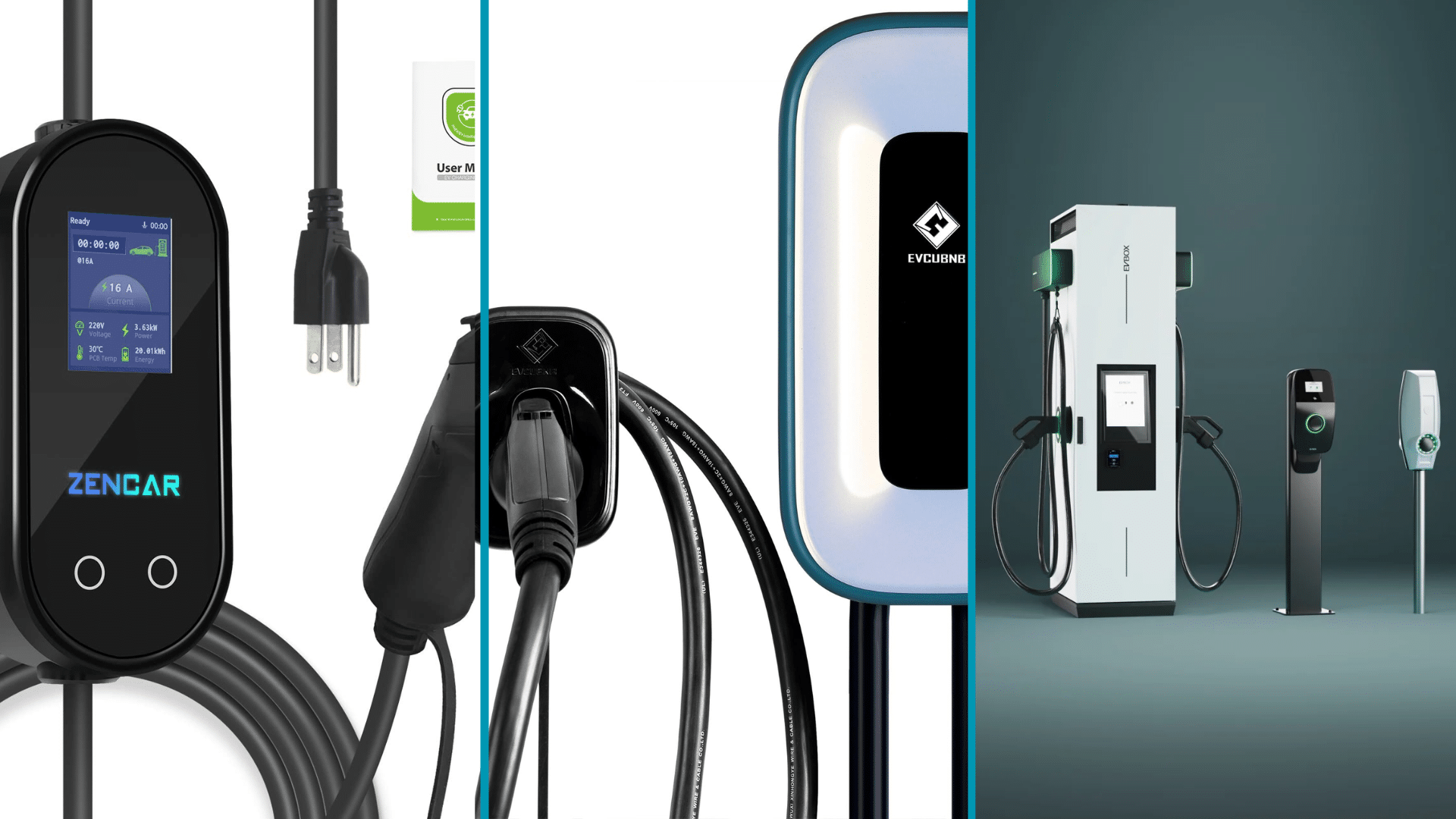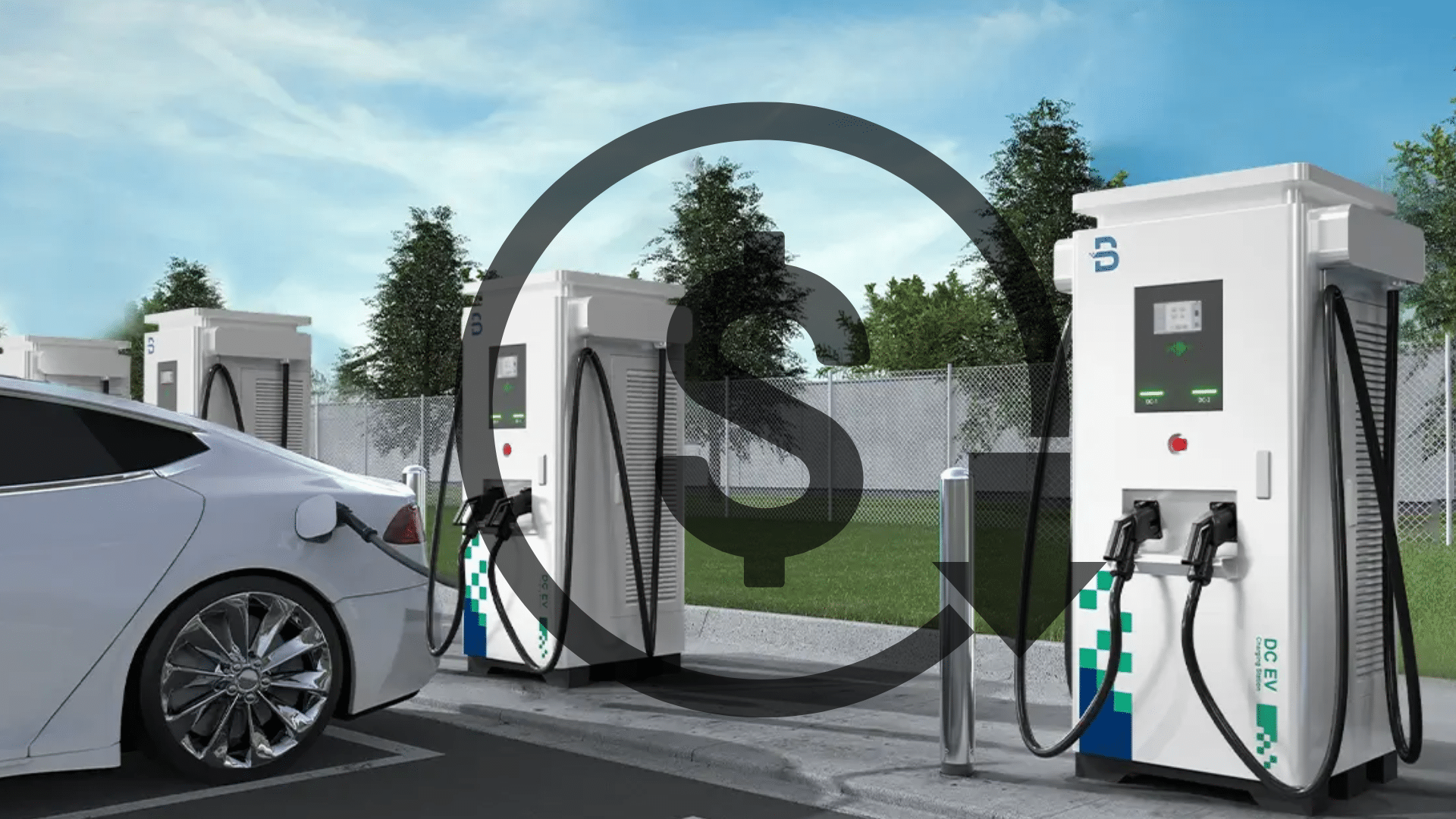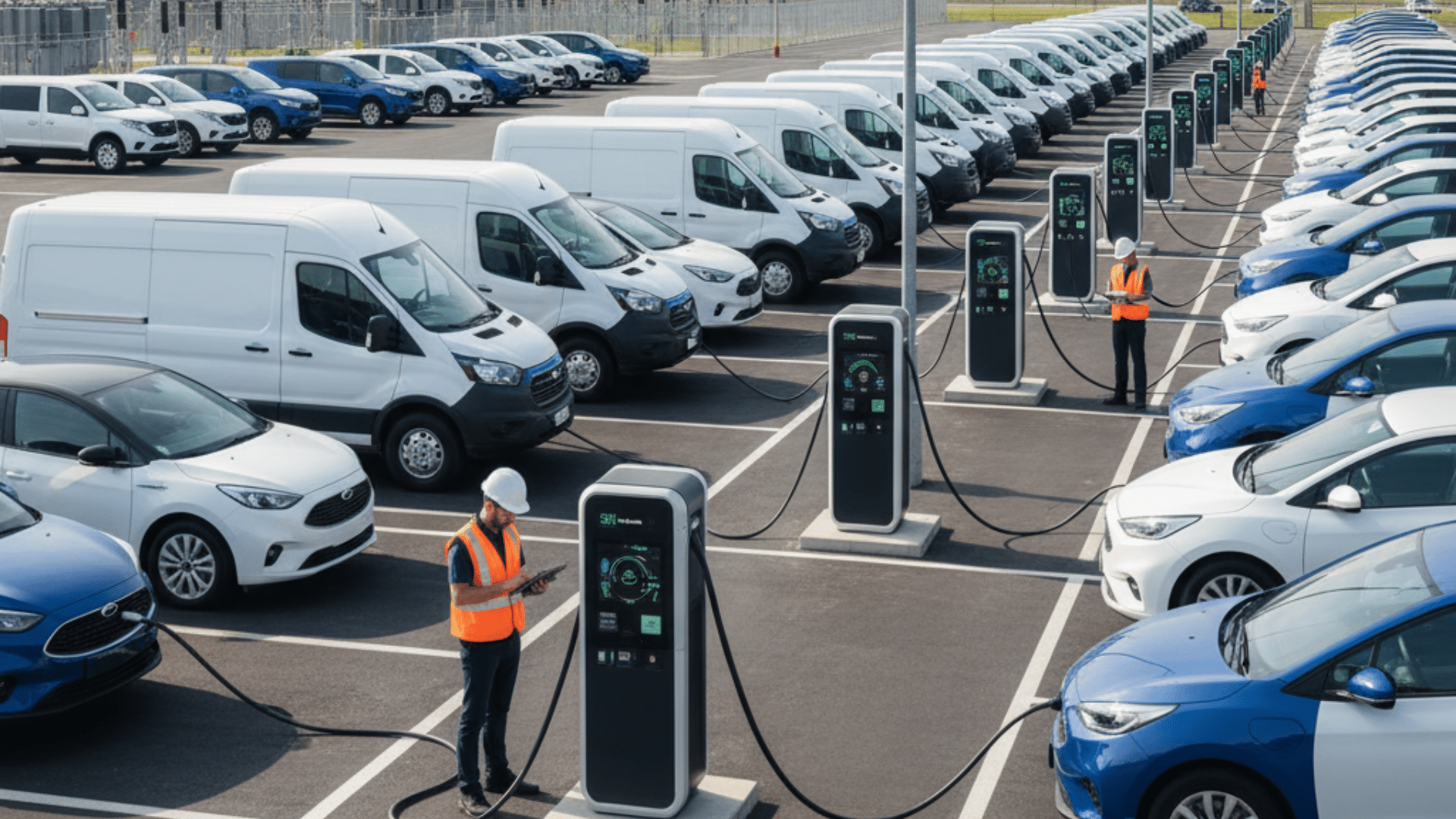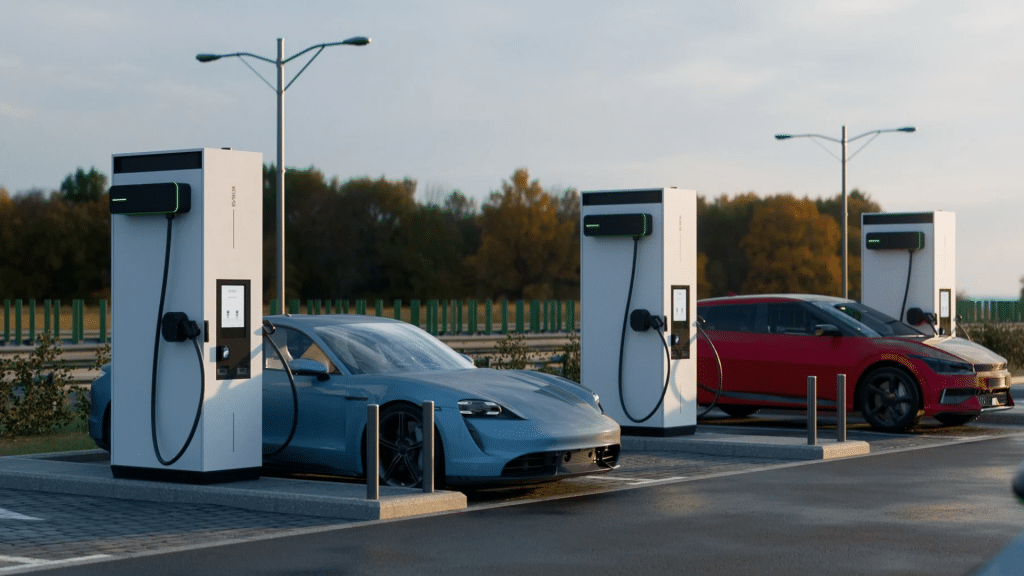If you’ve ever waited hours for your EV to charge, you know how frustrating it can be, especially when you’re on the move.
I’ve been there too, watching the battery climb slowly while checking the clock. That’s when Level 3 charging stations make all the difference. They send direct current straight to your car’s battery, cutting charge times from several hours to just 15–60 minutes.
In this blog, I’ll break down what Level 3 charging really is, how it compares to Level 1 and Level 2, and what it costs to use. You’ll also learn when it’s worth using, how to charge efficiently, and what every driver should know before plugging in.
As EV technology evolves, Level 3 charging will play an even bigger role in how we travel and refuel.
Efficiency of the Level 3 Charging Station
A Level 3 charging station is the fastest way to power up your electric vehicle.
Unlike Level 1 and Level 2 chargers that rely on alternating current (AC), Level 3 delivers direct current (DC) straight to the battery, bypassing your car’s onboard converter.
This allows a massive power transfer that cuts charging times from several hours to 15–60 minutes.
Most stations deliver between 50 and 350 kilowatts, depending on the charger and vehicle. You’ll typically find them along highways, rest stops, and fleet hubs, where drivers need quick top-ups to keep moving.
Level 1 chargers are best for overnight home use, Level 2 fits daily charging at home or work, and Level 3 is built purely for speed and convenience. If you travel often or manage multiple vehicles, it’s the go-to option when time matters.
EV Charging Levels Explained


Here’s a simple comparison showing how Level 3 stacks up against Level 1 and Level 2 in power, speed, cost, and use.
| Charging Level | Power Output | Charging Speed | Best Use Case | Average Cost |
|---|---|---|---|---|
| Level 1 | 120V outlet (1.3–2.4 kW) | 3–5 miles/hour | Overnight home use | Usually free |
| Level 2 | 240V outlet (7–22 kW) | 25–75 miles/hour | Homes, offices, parking | $300–$1,000 + install |
| Level 3 (DC Fast) | 50–350+ kW DC | 150–300+ miles/hour | Highways, fleets, quick stops | $25–$50/session |
Level 1 is slow but reliable for overnight use. Level 2 fits everyday home or workplace charging. Level 3 stands out for its high-speed DC power, making it perfect for road trips and quick top-ups on the go.
This quick comparison helps drivers understand EV charging levels and choose the right setup for their needs.
Benefits of Level 3 Charging Stations
A Level 3 charging station offers convenience, flexibility, and reliability for both private drivers and fleet users. Its rapid charging capability turns long stops into quick breaks, often adding hundreds of miles in under an hour.
These stations support growing EV travel infrastructure, reducing range anxiety and helping businesses attract more visitors. They’re ideal for travel routes, logistics operations, or high-traffic locations where downtime costs money.
Fast-charging networks also strengthen public confidence in EV adoption by offering near-gas-station convenience.
If you’re on a cross-country drive or running a delivery fleet, Level 3 charging combines speed with modern sustainability. It’s a key part of making electric mobility practical for everyone.
As infrastructure advances, Level 3 chargers will integrate renewable power sources and vehicle-to-grid (V2G) features, making EV travel even cleaner and smarter.
Is My EV Compatible With Level 3?
Not all EVs can use Level 3 chargers, so it’s important to check before plugging in. Most modern vehicles support CCS connectors, while older models may use CHAdeMO ports. Tesla cars rely on NACS, which is now being adopted by many non-Tesla brands.
Your car’s maximum charge rate also determines how fast it can accept power. A vehicle limited to 100 kW won’t gain extra speed from a 350 kW charger.
Quick Compatibility Checklist:
- CCS or NACS port
- 400–800V battery system
- Software/firmware up-to-date
Always confirm in your owner’s manual or app. Using compatible hardware ensures safe, efficient, and fast charging performance.
Newer vehicles may also gain compatibility through software updates as charging standards like NACS continue to expand.
How Fast is Level 3?
Level 3 charging is fast, but real-world results rarely match the “up to” numbers you see on signs. Every EV follows a charging curve, meaning it charges at full speed only when the battery level is low.
That’s why most drivers charge between 10–80%, where speeds are fastest and battery wear is minimal.
Several factors affect your Level 3 charging speed, including:
- Battery temperature: Cold or overheated batteries charge slower until they reach an ideal range.
- State of charge (SOC): Power intake drops as the battery fills up.
- Charger power rating: A 50 kW unit delivers far less speed than a 150 or 350 kW one.
- Vehicle limits: Each EV has a maximum charge rate that caps how fast it can draw power.
- Shared cabinets: When multiple vehicles charge from one cabinet, total output is split.
Future systems will adapt these limits with AI-based controls that optimize speed and battery health automatically.
What Does Level 3 Charging Cost?


Level 3 charging is faster but more expensive than home or workplace charging. Pricing varies by station type, speed, and location. Understanding how fees work helps you plan and save.
Billing Models:
- Per kWh: You’re billed for the actual electricity used, fair and usage-based.
- Per Minute: Charged by time connected, so unplug around 80% to avoid paying for slower speeds.
- Per Session: A flat rate per charge, convenient for long stops or full refills.
- Idle Fees: Added if you stay plugged in after charging ends.
Average Session Cost:
- 50 kW charger: $10–$15
- 150 kW charger: $25–$35
- 350 kW ultra-fast: $40–$50
Smart Savings: Charge during off-peak hours, precondition your battery, and compare network prices before choosing a station. A few small habits can make Level 3 charging faster and more affordable.
Many networks also offer memberships that lower rates, like Electrify America’s Pass+ or EVgo’s subscription plans.
When Should You Use Level 3?
Level 3 charging isn’t needed for every situation, use it when speed truly matters.
- Road Trips or Long Drives: Quick 15–30 minute stops can add hundreds of miles of range, making highway travel smooth and predictable. Perfect for reducing downtime and avoiding range anxiety.
- Fleet or Commercial Use: Ideal for delivery vans, taxis, and shared vehicles that need frequent, fast turnaround. Many businesses pair Level 3 units with smart scheduling and load management to maintain uptime and cut energy costs.
- Everyday Driving: Skip fast charging for daily commutes. Level 2 home charging overnight is cheaper, easier on the battery, and perfectly suited for short-distance driving.
How to Use a Level 3 Charger? (Step-By-Step)
Using a Level 3 charger is quick and straightforward when you follow the right steps. Here’s how to do it properly:
-
Find and Check: Open a charging app such as PlugShare, ChargePoint, or Electrify America. Filter results by plug type, power level, availability, and nearby facilities. Check user reviews or status updates to confirm the station is working before you arrive.
-
Prepare Your Vehicle: Try to reach the station when your battery is between 10% and 40%. This range gives the fastest charging speeds. If your car supports it, precondition the battery to bring it to the right temperature for optimal power intake.
-
Plug and Pay: Insert the charger’s connector firmly into your vehicle’s port. Start charging through your RFID card, mobile app, or a credit card at the kiosk. Wait for the screen or car display to confirm the session has started.
-
Monitor and Unplug: Watch your charge progress on the car display or app. Stop charging once you reach around 80%, as speeds drop sharply after that point. Unplug carefully, return the cable to its holder, and move your car promptly so others can charge.
You’ll get faster, safer charging results if you precondition your battery and stop at 80%.
Can You Install Level 3 At Home?
Installing a Level 3 charger at home isn’t practical for most people. These chargers need a 480-volt three-phase power supply, which is typically available only in commercial or industrial settings.
Most residential homes operate on a 120- or 240-volt system, which is far below the requirements of Level 3 chargers.
The cost is also a major factor; hardware alone can exceed $10,000, and installation may involve upgrading transformers, service panels, and wiring, which can double that amount.
In addition, local utilities and safety codes often restrict such high-capacity equipment in residential areas. For homeowners, a Level 2 charger is the smarter choice. It works on a standard 240-volt outlet, charges overnight, and is much more affordable.
Unless you have commercial-grade power, a Level 2 charger remains the best fit for home use.
For Property Owners and Fleets


Level 3 charging can boost a property’s value and improve fleet efficiency, but proper planning is essential. Power capacity, hardware selection, and smart software all determine long-term success and cost control.
1. Site Power and Utility Coordination
Start by checking your property’s electrical capacity. Most Level 3 chargers need 480-volt service, which often means utility upgrades, transformer replacements, and make-ready work.
Early coordination with your utility avoids delays and surprise costs. It’s also smart to plan ahead, reserve extra capacity for future stations or faster hardware. Clear conduit layouts and transformer placement keep installation smooth and scalable as EV demand grows.
2. Demand Charges and Load Management
Fast chargers draw massive power, which can trigger steep demand charges on commercial bills. Load management systems solve this by controlling when and how energy is delivered.
They can stagger charging sessions, lower peak usage, or use stored battery energy to offset costs. This keeps operations efficient without slowing charge times. For fleets, balancing load means lower utility bills and consistent uptime.
3. Hardware Tiers
Not every site needs the same power. Smaller fleets or parking facilities often do fine with 50–75 kW Level 3 chargers.
Highway stops and busy commercial hubs benefit from 120–180 kW models, while large-scale or future-ready sites should consider 300–350 kW units.
Matching charger strength with grid limits and usage patterns ensures you get fast, efficient charging without overspending on unused capacity.
4. Smart Software and Standards
Modern Level 3 systems rely on smart software for reliability and control. Platforms using OCPP (Open Charge Point Protocol) support remote diagnostics, uptime monitoring, and easy billing.
Some also integrate with apps or RFID systems for user access and payment. Smart algorithms adjust energy flow to reduce costs or respond to grid signals. Open standards help you mix hardware brands, scale easily, and track real-time performance data.
5. Rebates and Incentives
Federal, state, and local programs often cover a portion of Level 3 charger costs. Incentives may include rebates for equipment, construction, or utility coordination. To qualify, your system must meet standards like open network access and verified uptime.
Many utilities also provide extra credits for smart charging or renewable integration. Working with certified installers ensures compliance and helps you secure the highest rebate value available.
6. TCO and ROI
Understanding total cost of ownership (TCO) helps predict returns before you install. Account for hardware, electricity rates, installation, and maintenance. Analyze usage data to design fair pricingm per kWh, per minute, or flat-rate models.
Adding driver amenities like Wi-Fi or rest areas can increase dwell time and revenue. For fleets, faster charging means less downtime and higher productivity. Tracking CapEx and OpEx ensures steady long-term ROI.
Level 3 Charging Station: Accessibility, Safety, & Reliability
Every Level 3 charging station should deliver a safe, reliable, and inclusive experience for all drivers. A well-designed setup ensures comfort, safety, and uptime, even in tough weather conditions.
- Accessibility and Cable Reach: Chargers should follow ADA guidelines with proper curb space, clear ground area, and flexible cables. This ensures every driver, including wheelchair users, can plug in without difficulty.
- Safe Handling and Weather Protection: Use IP-rated equipment that resists rain, heat, and dust. Add protective canopies, lighting, and clear signage to make charging safe and easy any time of day.
- Uptime and Support: Remote monitoring, preventive maintenance, and fast service responses keep chargers dependable. Offering simple customer support, through apps or phone, builds trust and repeat use.
The Future of EV Charging Stations
The next wave of EV charging will be faster, smarter, and greener. Level 3 chargers are already evolving into ultra-fast and megawatt systems that can recharge vehicles in minutes, not hours.
Expect wider integration of renewable energy, battery storage, and AI-driven power management to balance grid demand and reduce costs. Vehicle-to-grid (V2G) technology will allow EVs to return power during peaks, turning cars into mobile energy assets.
Wireless charging and robotic connectors are also being tested to make charging effortless and fully automated. As more networks adopt open standards and expand coverage, EV travel will soon be as easy, and even cleaner, than filling up with gas.
Conclusion
Level 3 charging stations represent one of the most powerful advancements in electric vehicle technology. These high-speed systems mark a turning point in how drivers travel, offering near-gas-station convenience with clean, electric power.
Success with fast charging depends on three things: understanding your vehicle’s charging limits, planning efficient stops, and managing battery health over time.
When used strategically, Level 3 charging can make long-distance EV travel smooth, reliable, and stress-free.
If you’re new to fast charging, I recommend testing different networks and tracking your charge times before long trips. Learn how your EV responds and adjust accordingly.
Have you tried Level 3 charging yet? Share your experiences and tips in the comments below.

